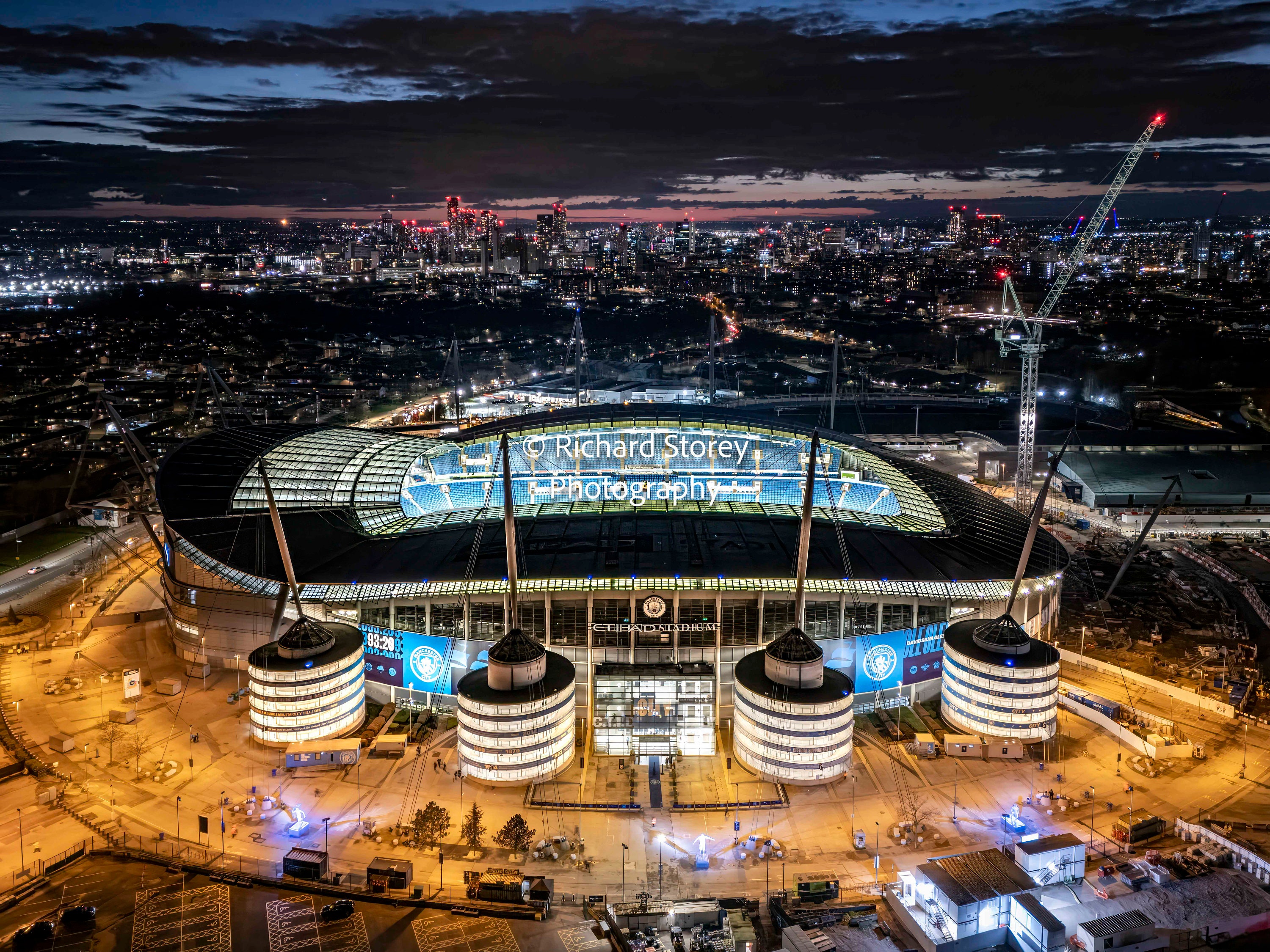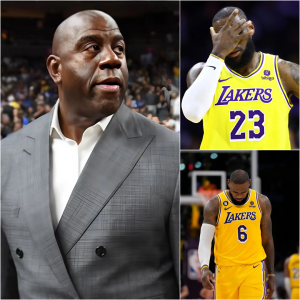The announcement came early in the morning, and immediately, the football universe was sent into a frenzy. Media outlets exploded with breaking news alerts. Social media erupted in a storm of excitement and disbelief. Fans, pundits, analysts, and even rival club executives struggled to comprehend the scale of what was being proposed. A $9 billion renovation? For a football stadium? And not just any renovation – the project was set to transform the Etihad Stadium into a structure that could redefine football itself. Soriano, known for his strategic brilliance and daring vision, had officially lifted the curtain on what could only be described as a football revolution.

The press conference was held inside the existing Etihad Stadium, the very heart of Manchester City’s operations. Cameras flashed relentlessly as Soriano took the podium. His calm demeanor contrasted sharply with the magnitude of the announcement he was about to deliver. “Today,” Soriano began, his voice steady yet commanding, “we are not just announcing a renovation. We are announcing a new era. An era where Manchester City will not only compete on the pitch but will redefine the experience of football globally. This $9 billion project will expand our stadium, enhance fan experience, and create a venue that is unmatched anywhere in the world.”
Fans watching live could barely contain their excitement. The words “new era” and “unmatched anywhere in the world” echoed across timelines and news feeds. Supporters immediately began speculating about what this could mean. Could it mean more seats? VIP lounges? Cutting-edge technology embedded throughout the stadium? Soriano was deliberate in leaving some questions unanswered. He wanted the anticipation to grow, the speculation to flourish, and the narrative to dominate global football discourse.
Reports quickly emerged that the renovation would involve not only expanding the seating capacity but also integrating technology that could make every fan feel closer to the action than ever before. Virtual reality experiences, interactive fan zones, and even personalized in-stadium services were rumored to be part of the plan. The ambition was clear: the Etihad would not just host matches; it would create a football experience that no other stadium in the world could match.
The financial magnitude of the project, however, was what shocked most people. $9 billion is a number that transcends football budgets. It is a figure usually associated with mega-corporations or large-scale infrastructure projects, not stadium renovations. The decision to invest such an astronomical amount showed the club’s determination to not just be competitive, but to dominate not only the Premier League but the global football landscape. Analysts immediately began running the numbers. Comparisons were made with some of the largest stadium projects in history, and experts struggled to find an equivalent in recent times. This was more than a renovation; it was a statement.
Rival clubs took notice. Executives from across Europe were seen watching the press conference live, many of them in disbelief. The idea that one club could commit to a project of this scale sent ripples through boardrooms from Madrid to Munich, Milan to Paris. Questions arose immediately: Could other clubs compete financially? Would this trigger a new arms race in stadium development? And perhaps most importantly, how would fans react to such a massive overhaul of a beloved stadium?
Fans of Manchester City were ecstatic. Social media became a flood of messages celebrating Soriano’s vision. Memes, fan art, and speculative renderings of the “new Etihad” dominated feeds. Supporters imagined towering stands, futuristic lighting, and a stadium that could host more than football: concerts, international tournaments, and global events that would place Manchester City at the center of the world stage. The excitement was palpable, and for many, the announcement confirmed what they had always believed – Manchester City was no ordinary football club; it was a global powerhouse with a vision that matched its ambitions on the pitch.
Behind the scenes, Soriano and his team had spent years planning this moment. The project was not conceived overnight. Architects, engineers, financial analysts, and city planners had collaborated to draft a blueprint that balanced ambition with feasibility. Environmental impact assessments, urban planning consultations, and fan experience studies all played a role in shaping the final plan. The $9 billion figure, though eye-watering, was carefully calculated to ensure the stadium would be world-class while maintaining financial sustainability.
The architectural renderings that were released alongside the announcement left fans and experts speechless. The stadium, already iconic, would grow into a leviathan of sport and entertainment. Every detail was designed to enhance the spectacle: retractable roofs for weather-proof matches, panoramic viewing platforms for fans, integrated technology for real-time stats and analytics, and hospitality suites that rivaled five-star hotels. The ambition was not merely to expand; it was to redefine what a stadium could be.
Yet, amid the excitement, some voices raised concerns. Skeptics questioned the environmental impact, the disruption to the local community, and whether such a massive investment in infrastructure might overshadow the club’s focus on football performance. Soriano addressed these concerns directly during the press conference. “We are committed to ensuring that this project benefits not only our fans but the city of Manchester. Sustainability, accessibility, and community engagement are at the core of our vision. This is more than a stadium; it is a gift to the city, a beacon for generations to come.”

As the weeks passed, rumors began to circulate about the project’s finer details. Insider sources suggested that the stadium could eventually hold over 100,000 spectators, potentially surpassing any existing football venue in the world. Luxury suites would include private dining experiences, high-tech media centers, and exclusive fan clubs. Public spaces surrounding the stadium were planned to include museums, retail zones, and even football academies that would nurture talent from around the globe. Manchester City was positioning itself not only as a club but as a cultural institution, intertwining sport, technology, and community engagement on an unprecedented scale.
The economic implications were also staggering. A $9 billion construction project would generate thousands of jobs, stimulate local businesses, and create a new tourist magnet for Manchester. City officials praised Soriano’s initiative, recognizing that the stadium could become a landmark that would rival the likes of Old Trafford, Camp Nou, and the Santiago Bernabéu. The project was already being hailed as a model for how football clubs could leverage infrastructure investment to enhance both sporting and economic impact.
Internationally, the announcement dominated headlines. Football fans from Asia, Africa, the Americas, and the Middle East expressed awe at the scale of the ambition. Analysts debated how such a massive stadium could influence global competitions. Could the Etihad host a World Cup final or a UEFA Champions League final on its own, without relying on government stadiums? Could Manchester City create a venue that became the default home for football’s most iconic events? The imagination of fans and commentators ran wild.
Even the players at Manchester City were visibly energized. Dressing room chatter shifted from tactics and training schedules to discussions about the future stadium. Pep Guardiola reportedly called the announcement “a dream realized,” expressing pride in being part of a club willing to dream bigger than anyone else. Players imagined walking onto a pitch surrounded by 100,000 fans, with cutting-edge technology enhancing their experience and creating a spectacle that no rival could match. Motivation levels soared as the sense of being part of a historic project seeped into every corner of the club.

As the months progressed, construction plans moved forward. City planners coordinated with architects, engineers, and construction teams to ensure minimal disruption to ongoing matches. Temporary seating adjustments were made, and logistical planning became an intricate ballet of precision. Every steel beam, glass panel, and electronic installation was meticulously planned to align with the vision Soriano had revealed. Fans could follow progress through virtual renderings and time-lapse videos, making the project feel alive, interactive, and tangible.
The financial strategy behind the $9 billion project was equally impressive. Soriano emphasized a combination of private investment, commercial partnerships, sponsorship deals, and long-term revenue streams from hospitality and events. No public funds were involved, and the club maintained that the investment would be sustainable, with returns generated through enhanced fan engagement, ticketing, and international exposure. In other words, the stadium was not just a monument; it was a carefully engineered financial engine designed to secure Manchester City’s dominance for decades.!
As the world watched, the narrative of Manchester City transformed. The club was no longer just a football team; it had become a symbol of ambition, innovation, and global influence. Fans began speculating about the cultural impact, imagining future documentaries, films, and media centered around the stadium and the club’s rise. Social media campaigns, fan forums, and YouTube channels exploded with theories, renderings, and fan-made proposals. Every day brought new excitement, new analysis, and new appreciation for the sheer audacity of Soriano’s vision.

The Etihad renovation also reignited debates about stadium evolution in football. Clubs around the world were suddenly scrutinizing their own facilities. Could rivals match this scale of ambition? Would this spark a new era where stadiums were not just functional spaces but immersive experiences combining architecture, technology, and global branding? Analysts suggested that Manchester City’s move could trigger a seismic shift in how football was consumed, experienced, and monetized.
Soriano, ever the strategic mind, continued to stoke anticipation while maintaining an aura of mystery. Teasers of architectural plans were released periodically, highlighting features without revealing everything. Fans were left to speculate about hidden lounges, secret tech integrations, and unique designs that would make the Etihad iconic. The careful balance of transparency and secrecy created a media frenzy that kept Manchester City at the center of global football discussions.
The project was not without challenges. Logistical hurdles, supply chain issues, and technological innovations required constant attention. Yet, Soriano and his team approached every obstacle with meticulous planning and determination. The message to fans and critics was clear: Manchester City was not just dreaming; it was building, step by step, toward a reality that would redefine football infrastructure forever.
In interviews, Soriano often reflected on the symbolic nature of the stadium. “Football is more than a game,” he said. “It is passion, culture, and community. This stadium is a representation of everything Manchester City stands for: ambition, innovation, and a commitment to our fans. We are creating a home for the present and a legacy for the future.” These words resonated deeply, reinforcing the idea that the $9 billion investment was about more than money—it was about identity, vision, and lasting impact.
As construction continued, fan engagement soared. Digital platforms allowed supporters to experience virtual tours, explore behind-the-scenes developments, and even vote on aesthetic choices for the stadium’s design. The project became a collaborative experience between the club and its global fanbase, further deepening loyalty and emotional investment. The Etihad was evolving not just as a physical space, but as a symbol of connection between a club and its worldwide supporters.

By the time the first steel beams were lifted into place, the global conversation had shifted from speculation to admiration. Football clubs, sports executives, and fans alike began to see Manchester City as a pioneer, willing to invest in a vision that transcended conventional boundaries. The $9 billion renovation was no longer just a headline—it was a blueprint for the future of football itself.
Ultimately, Soriano’s announcement did more than reveal a massive stadium project. It captured the imagination of millions, sparked debates, and established a narrative of ambition that few could match. Manchester City was not simply building a larger stadium; it was redefining what it meant to be a football club in the 21st century. The Etihad would become a monument to ambition, innovation, and the enduring power of football to inspire, unite, and awe the world.
The project continues to unfold, and as it does, fans around the globe remain glued to every update. Renderings of towering stands, state-of-the-art technology, and immersive fan experiences continue to circulate online, fueling excitement and speculation. Manchester City’s $9 billion investment is now more than just an infrastructure project—it is a story of vision, courage, and relentless pursuit of greatness that will be remembered for generations






